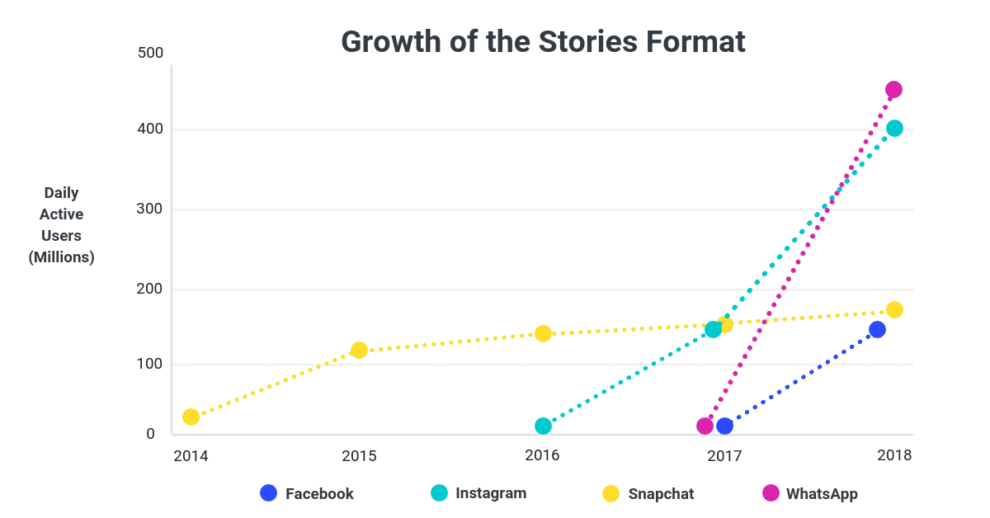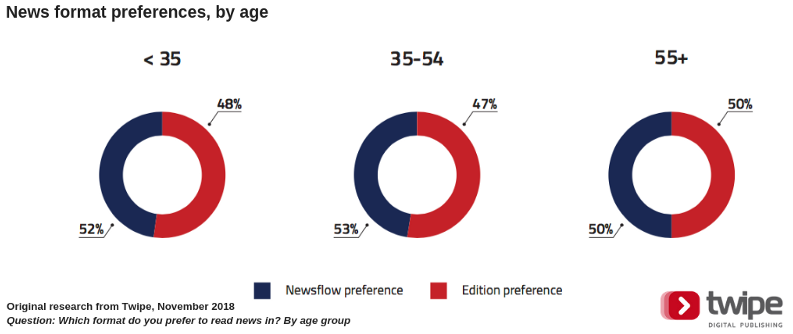Increasing engagement, reaching younger audiences, habit formation…all topics keeping leaders of the news media industry up at night. While there is no magic bullet (and indeed you should be sceptical of any promised panacea, à la ‘pivot to video’), many publishers have been undervaluing one potential strategy: the Stories format. First seen on Snapchat and later on Instagram and Facebook, this temporary format will only grow in importance this year.
“Stories” are already seen daily by hundreds of millions people (current estimates are 150 million on Facebook, 190 million on Snapchat, and 300 million on Instagram), research from Buffer shows incredible growth in the past year. Reuters predicts that this year Stories will surpass feeds as the main way people share news with friends, a sentiment shared by Facebook Chief Product Officer, Chris Cox. With the announcement of Guardian’s venture capital fund funding #ThisMuchIKnow, a new Instagram-only news organisation, we were curious to explore the Stories format further.
Before we dig deeper, we might need to clear up some confusion! Calling this format “Stories” can be confusing, but as of yet there’s no industry consensus on a better title. It’s something that’s been discussed at Nieman Lab before, and if you do have a better way of referring to this format, we are eager to hear it.
What would you call the generic form of what Snapchat/Instagram/Facebook/AMP Stories are? Capitalized “Stories” is offensive, lowercase “stories” is confusing. “Visual stories”? “Card stories”?
— Joshua Benton (@jbenton) February 26, 2018
Engaging younger audiences
After NBC launched its “StayTuned” Snapchat news show in mid-2017, they reported that the viewers of the program are mainly under the age of 25 (75%), and 50% watch more than three times weekly. Stories are able to reach a younger news audience because they meet readers where they already are, on social media, but also because they are an adapted format for the different reading behaviours of younger news consumers. Research from BBC’s News Labs into designing news experiences for a younger audience found a few different characteristics and reading behaviours that differentiate the 18-26 year old group from other readers. A key characteristic is that 18-26 year olds want to be able to skim stories, but then dig deeper into them when they are interested. That’s possible with Stories, giving an “at a glance” view on a topic with the option to swipe-up for the full article.
Stories can serve as a re-imagination of the newspaper edition format for the digital age, a bundle of content with a hierarchy and a clear beginning and ending. We know that half of all readers, including the younger age group, prefer to read in the edition format, valuing the sense of completion and the ability to step away from the news.
Stories are a much more interactive format than other social mediums, with research suggesting that 10-25% of followers will swipe up and go through to a link when prompted to do so on the Stories format. Twitter by contrast often sees as little as 2% of users clicking on links. Yuval Rechter, head of digital at First Media, states as well that having someone swipe-up on an Instagram Story is worth more in lifetime value than sign-ups from people who came across an article on Facebook.
Creating habits by leveraging micro-moments
We know that frequency is the highest predictor for retention, more so than even extent or depth. But how exactly can publishers develop such daily habits in their readers?
We see readers today more and more engaged in micro-moments of news consumption, such as while making coffee, in line for lunch, or while in an elevator. In these moments, busy readers are increasingly looking to their mobile devices in order to feel a sense of being caught up on the latest news. This sense of completion, and the reward of quickly learning the latest news, is key in the habit formation cycle. In Nir Eyal’s Hook Canvas, a crucial framework for understanding habit formation, this reward is the penultimate step in the creation of a habit. The ephemeral nature of this format, on social media they disappear after 24 hours, means readers know they need to make time each day to view the Stories. The Story format has already made substantial advance in conquering this space and is a great opportunity for publishers to leverage.
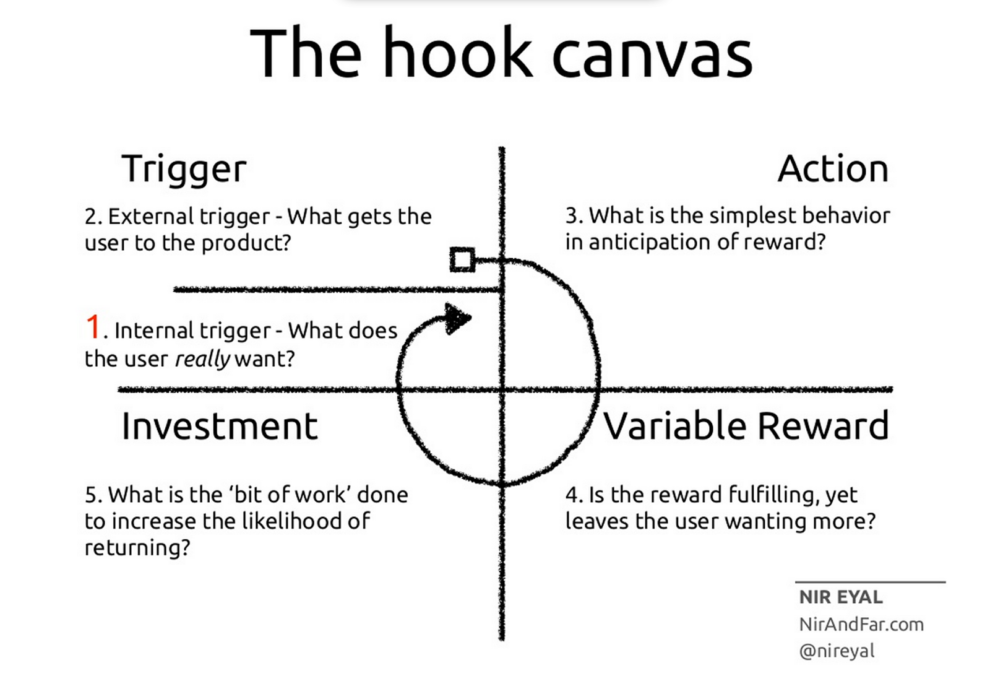
Stories also serve the “new norm” in reading: skimming. Research from San Jose State University researcher Ziming Liu show that today most people use an F or Z pattern when reading, meaning they sample the first line and then word-spot through the rest of the text.

Publishers are also leveraging these micro-moments by developing digital products for the busy lifestyles of many readers. That can mean anything from adapting content for the time of day it will be read (as Ouest-France does with L’édition du Soir) to publishing stories when readers are actually consuming them (such as the Star Tribune). We see publishers today launching new digital products, which are shorter bundles of content, giving busy readers the service of curation (something they are more likely to pay for). That’s what the Economist and Le Monde have done with their digital-only editions, Espresso and La Matinale respectively. This year, we expect to see more publishers creating new editions in this style, an early precursor to the Stories format.
Innovations and experiments
There are plenty of great examples of engaging younger readers through the Stories format on Instagram. We can look at some of the usual suspects: The New York Times, The Guardian, and Financial Times for ideas and inspiration.
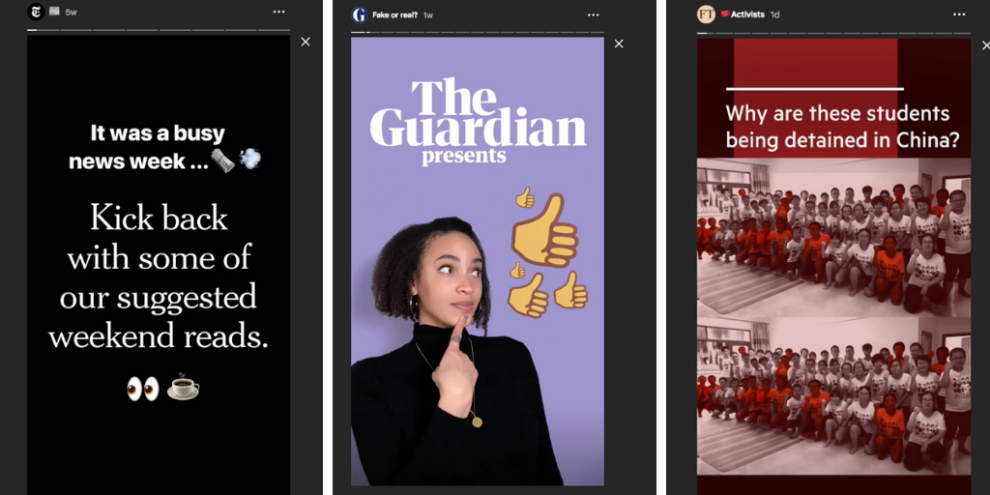
There are also other Instagram-only news organisation in addition to #ThisMuchIKnow. Disney channel star Joshua Rush has launched a weekly news show on Instagram (@Newsinarush), but he shares the news with his 37.6k followers via posts, not Stories. Jessica Yellin, a former CNN White House Correspondent is building a news brand “News Not Noise” on her personal account (@Jessicayellin). Her 128k followers get their news from a mix of posts and Stories, the latter which are mainly videos of her speaking directly into the camera.
I think the real connection comes from the Stories – it’s so intimate. Just talking directly to the audience. The part I like most about this platform is that the audience can DM you right back. In the past I had a huge platform, but I had no idea how it was being received by the audience.
Jessica Yellin, News Not Noise
We predict the Stories format will change how publisher set up their social sharing options. Netflix recently announced it will start allowing its viewers to share the series or movie they are watching directly as a Story to Instagram. We can imagine publishers enabling a similar social sharing option for articles on their website or in their editions, allowing readers to share compelling images to promote longform articles or in-depth analysis or using text based graphics to share breaking news with friends.
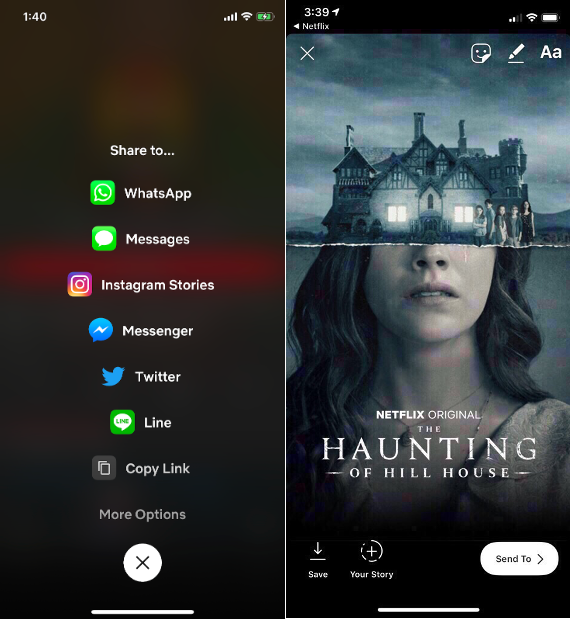
Finally, while the Stories format is important in your social media strategy, it can also serve as inspiration for your digital product strategy. We see Google’s AMP Stories as an interesting avenue for experimentation for publishers. With this, anyone can build a Story and host it on any website; Google has also announced it will expand the way these Stories appear in search as well. This can serve as a way to reach the various types of news consumers on a homepage, giving an overview of the top stories in a quick manner then those wanting a more in-depth understanding can read the articles in full.
Whether is be through their social media strategy, updating their social sharing options, or creating new digital products, the Stories format is clearly something publishers need to keep any eye on.
This article was written by Mary-Katharine Phillips, Media Innovation Analyst at Twipe from 2017 – 2021.

